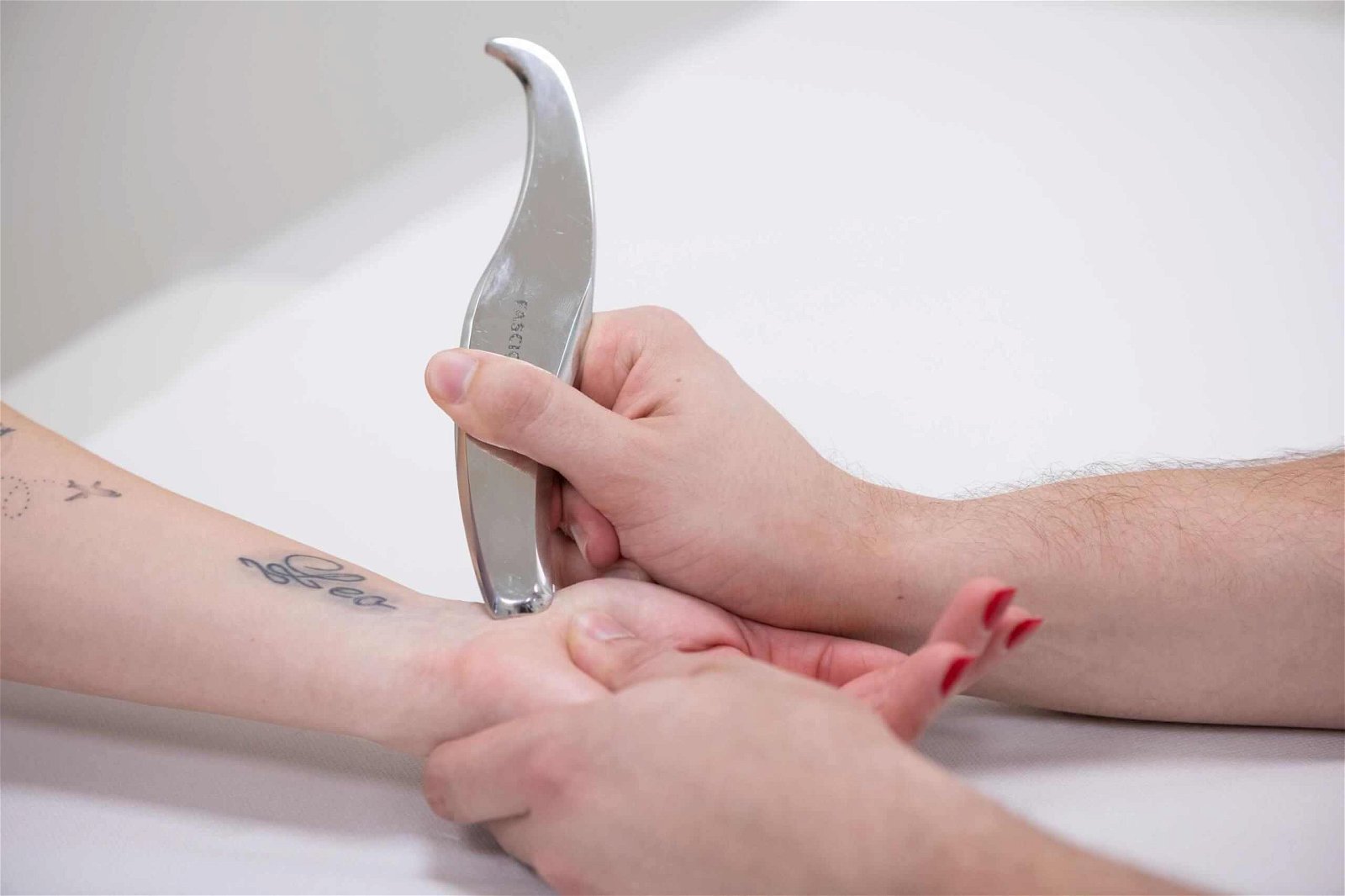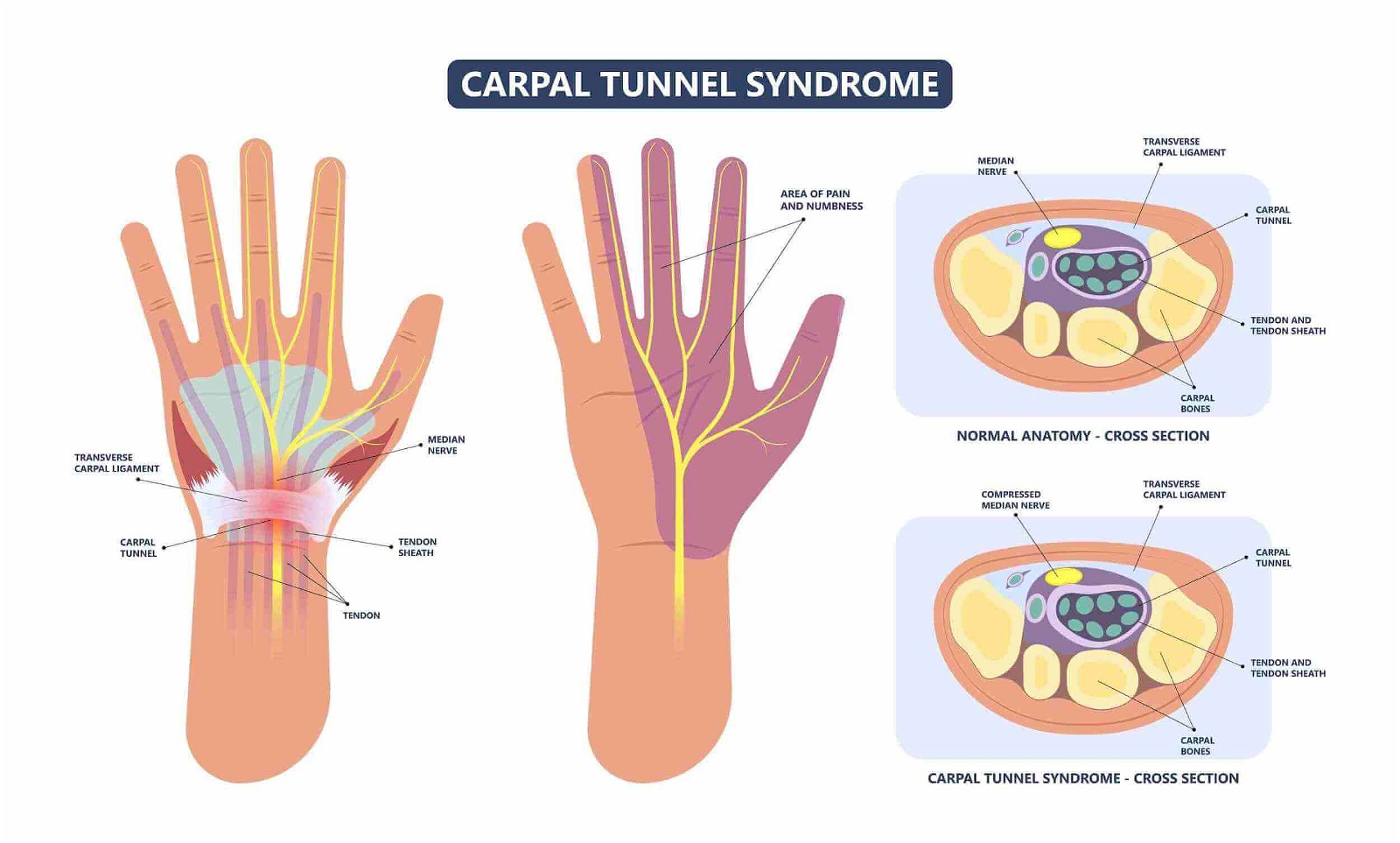Wrist instability is a pathological condition characterised by the loss of normal wrist function due to an incorrect position of the carpal bones and/or the radioulnar joint. Wrist instability is characterised over a longer period of time by limitations in range of motion and mobility; if the condition is not treated with appropriate training rehabilitation, the patient is at risk for degenerative radiocarpal or intercarpal arthritis, chronic pain, and permanent palm dysfunction.
The cause of a wrist instability is often a previous traumatic injury, which causes changes in the ligamentous structure of the wrist and associated microinjuries to the connective tissue. Chronically weakened wrist ligaments lead to problems with joint stability. Degenerative lesions of the wrist joints are a common cause of wrist instability, occurring primarily in the older age group; specifically, these are usually rheumatoid arthritis or osteoarthritis. Wrist instability is more common in younger and middle-aged populations, as it is most often the result of excessive sports activity, falls, impacts, and fractures, which are generally more typical of active individuals.
As many as 25% of all wrist injuries remain undiagnosed or are diagnosed too late, when symptoms of instability or degeneration have already developed, which significantly reduces the chances of successful conservative treatment. The wrist is the most complex joint in the human body, and instability can be caused by damage to numerous ligaments, resulting in non-specific symptoms.
The most common symptoms of wrist instability are a feeling of weakness in the wrist when under load, limited mobility of the joint and severe pain in the final amplitudes of movements, pain deep in the wrist, popping and clicking sounds when moving the wrist, and limited ability to perform wrist rotations. There are four types of wrist instability, specifically: dorsiflexed intercalated segment instability (DISI), volarflexed intercalated segment instability (VISI), ulnar translocation (UT), and dorsal translocation (DT).
When experiencing functional anomalies in the wrist joint, it is important to promptly perform diagnostics with magnetic resonance imaging (MRI), which provides us with precise parameters of damage within the joint tissues. Most wrist injuries are treated conservatively with physical therapy and exercises to correct asymmetrical and atrophied muscle groups. Joint mobility is improved with specialised kinesiotherapy exercises. In the initial phase of conservative treatment of wrist instability, immobilisation is applied, and anti-inflammatory medications may be used with therapeutic techniques to promote healing.
There is no one specific surgical treatment for wrist instability; it depends primarily on the type of wrist instability and the degree of damage to the ligaments or wrist bones. The type of surgical procedure is suggested based on the functional limitations of the wrist, the risk of arthrosis, and the self-healing potential of wrist ligaments. If 80% of the mobility and strength of the wrist joint is preserved, surgical treatment is rarely performed; in cases of ligament rupture that causes greater limitations, surgical fixation of the damaged segment is performed. Postoperative rehabilitation is aimed at gaining range of motion and strength in the wrist; in the initial phase, exercises are mainly isometric, and the patient progressively begins performing complex wrist movements. The timeline for postoperative rehabilitation varies depending on the specifics of the injury.
– It is important to promptly perform diagnostics with magnetic resonance imaging (MRI), which provides us with precise parameters of damage within the joint tissues.
– In the initial phase of conservative treatment of wrist instability, immobilisation is applied, and anti-inflammatory medications may be used with therapeutic techniques to promote healing.
– If 80% of the mobility and strength of the wrist joint is preserved, surgical treatment is rarely performed; in cases of ligament rupture that causes greater limitations, surgical fixation of the damaged segment is performed.















